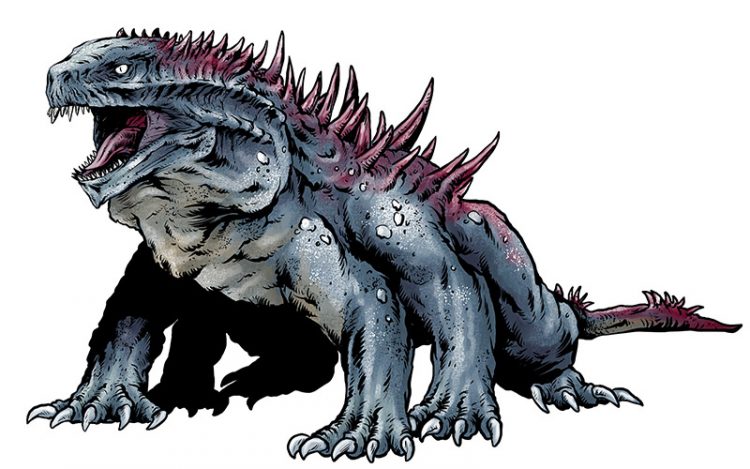Basilisk
"Whilst the eye of the basilisk has certain magical properties, I grant you, what I asked you to retrieve was basilisk ichor."
Nolichan, Potionmaster of Blacksand
Basic Information
Anatomy
Basilisks are reptilian in appearance, resembling great lizards with eight legs. They have a large fanged maw with several rear, flat molars for crushing. Scales as hard as stone protect them, being colours of grey to green and often mottled to give them quite the camouflage in their cold, stony and mossy environment.
The blood of a basilisk, also called ichor, is a black fluid that has a high mineral component to it, often dried and used in magics involving petrification or reversing petrification.
Genetics and Reproduction
Basilisks mate yearly and produce five or six eggs, which are incubated in a large mound of sticks, earth, leaf litter and moss for up to twenty-one days before hatching. The young are immediately agile and leave the nest in search of food. They need no further parental care.
Growth Rate & Stages
Basilisks reach maturity in two years and are thought to live for up to eighty years, although during this time they continue to grow. The largest basilisk recorded was seventy-two feet long, but an accurate way to weigh the specimen presented problems that were not overcome.
Ecology and Habitats
Basilisks only reside on the Dread Isle and although hunted for the harvesting of their bodily components for magical purposes, still remain in strong numbers. Basilisks are cave dwellers, but enjoy the sunlight as they are cold-blooded.
Dietary Needs and Habits
Basilisks will certainly hunt for fresh food, being both carnivore and lithivore, as they also eat stone, which they crush with their rear molars. It is surmised that the ingestion of stone is transferred through the digestive system to the scales. As the scales often grow in colour to match their rocky surroundings, basilisks can also be thought of as an ambush predator.
Additional Information
Perception and Sensory Capabilities
Basilisk sense their prey with chemo-sensory taste from their flickering tongue more than hearing or eyesight, even though these latter senses are still equivalent to humans and dwarves.
Of course the most deadly of all capabilities is that of its gaze, as direct eye contact with the beast initiates pertification of the observer which is thought to be magical in nature, but yet unproven.
Scientific Name
Draconid
Conservation Status
Endemic to the Dread Isle in the Northern Sea, basilisks still thrive in their environment, mostly due to their own deadliness.
Remove these ads. Join the Worldbuilders Guild



Comments